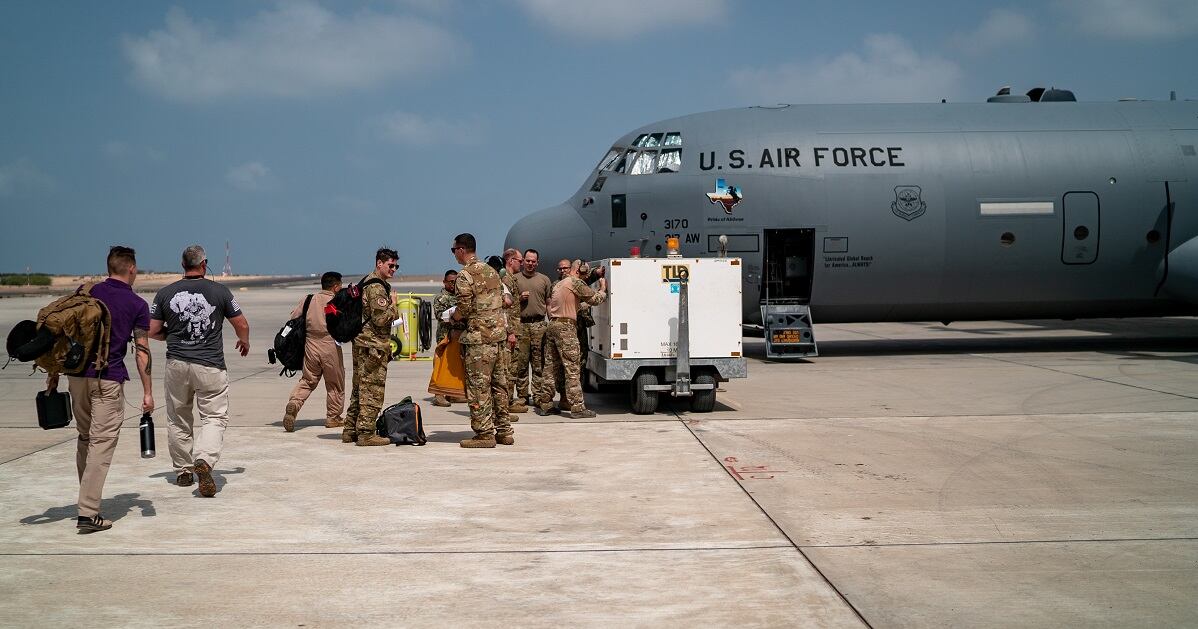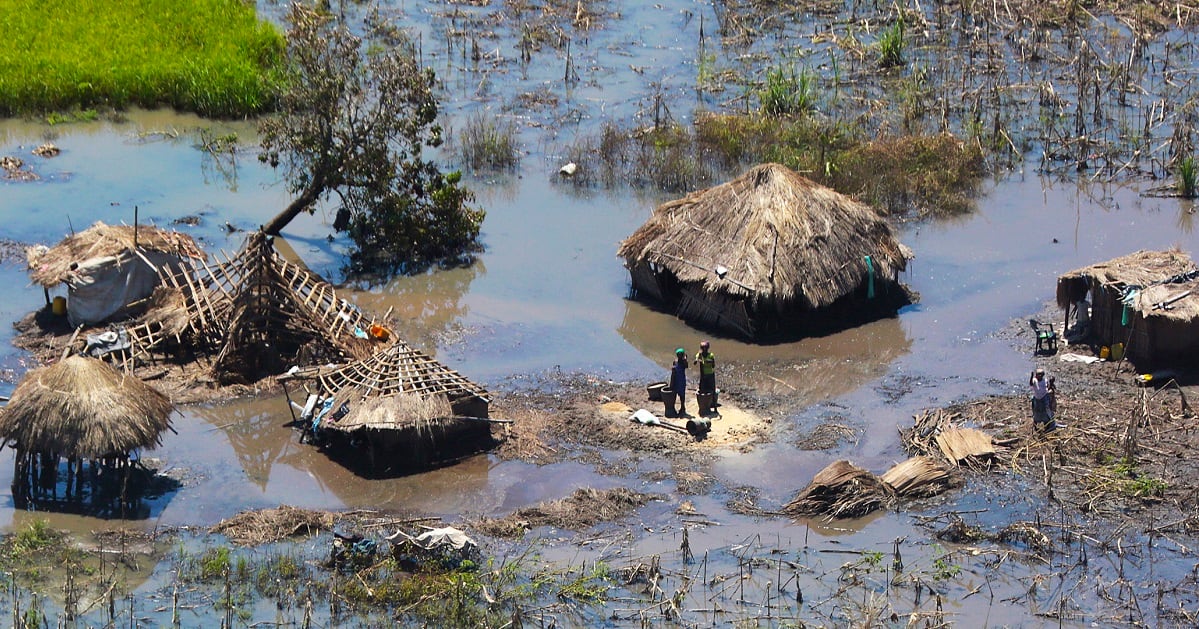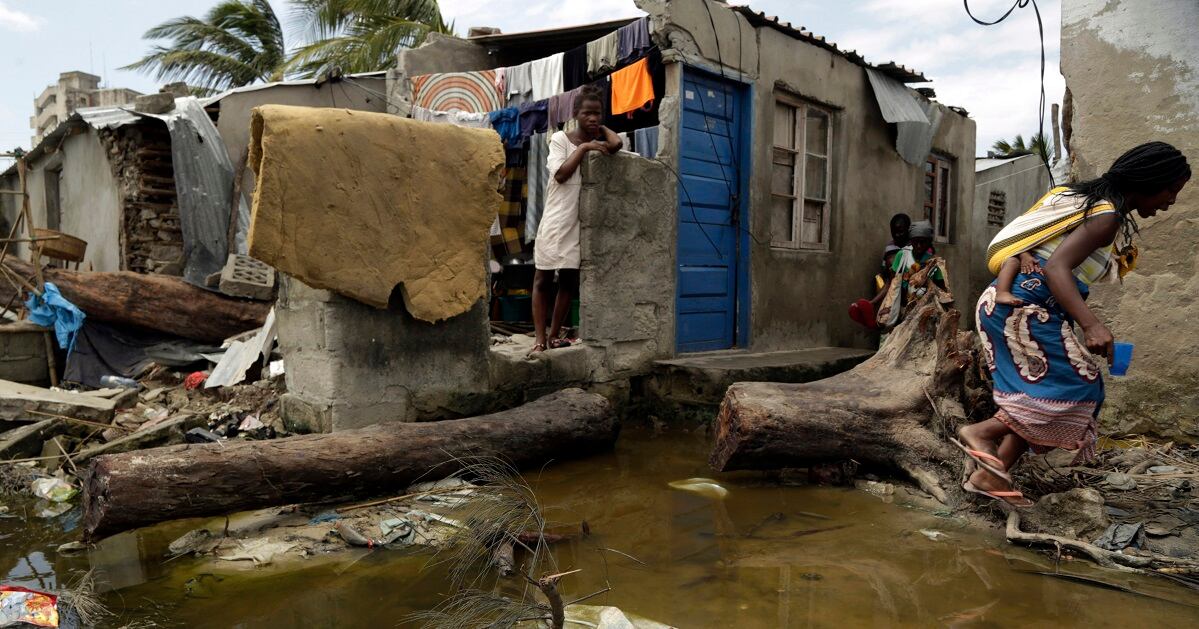Military personnel with U.S. Africa Command are in Mozambique to spearhead humanitarian relief efforts after the strongest-ever cyclone in the Southern Hemisphere struck Southeast Africa March 14-15.
But conditions are dire, and now more than 12 days after the storm, they are racing against the clock.
About 1.8 million people in Mozambique are in urgent need of help, and emergency workers are trying to contain outbreaks of cholera and malaria.
Hundreds of thousands of people in Mozambique, Zimbabwe and Malawi have been displaced and are living in camps or public buildings on higher ground. Almost 800 people have died, and that number is expected to rise.
A six-person team from the 435th Contingency Response Group out of Ramstein Air Base, Germany, began airfield assessments for the relief effort Tuesday.
The Red Cross and other aid groups, and military aircraft from South Africa and elsewhere, are bring supplies to people who need them. But the big concern right now is the hundreds of thousands of people who live in remote areas inland who are still waiting for help.
Col. Jason Terry, commander of the 435th, spoke by phone with a small group of reporters Wednesday from an airfield in Beira, a coastal city of about half a million people in central Mozambique where the cyclone made landfall, packing 105 mph winds and heavy rain.

About 39 airmen with the group will function as a 24-hour distribution hub for receiving, packaging and distributing food, water, medical supplies and other relief materials once they start coming in, according to an AFRICOM news release.
Terry said he observed some of the flooding from Cyclone Idai as he was flying into Beira. More than 12 days after the storm, it still “covers an area the size of Luxembourg,” he said.
Terry and his team are assessing airfields across the stricken area to determine where U.S. Air Force C-17s, C-130s and other military aircraft can safely land, park and refuel. Helicopters are in short supply in Mozambique, Terry said, but any that are available will be an extremely valuable resource given the current condition of roads and airfields across the country.

The CRG is looking to establish different refueling points for the air assets supporting USAID relief efforts, Terry said. The group will assist with fueling operations where needed for military aircraft, and the government of Mozambique also has established fueling capabilities at its airports.
“We’re specifically designed for these missions," said Terry’s deputy commander, Lt. Col. Brady Vaira, in a news release. "We have the right team composition, equipment and specialty training to rapidly open and operate expeditionary airfields in a broad spectrum of environments. Our airmen are motivated to partner with all the agencies that are providing support to help out people in need.”

The relief effort is being led by the U.S. Agency for International Development, in conjunction with the government of the Republic of Mozambique. USAFRICOM has designated the Combined Joint Task Force – Horn of Africa as the lead for DoD disaster relief efforts, and other elements from CJTF-HOA are also on the ground in Mozambique conducting initial assessments.
The task force is in the process of transporting nearly 275 metric tons of food from the U.N. World Food Programme, as well as equipment and medical supplies, to the disaster-struck nation aboard two U.S. Air Force C-130J Hercules aircraft.
Terry noted that the interplay with Mozambique’s military personnel and government officials has been heartening, calling it one of the “most welcoming environments” he has ever encountered.
“It is important at the outset to do the necessary heavy lifting on the ground to enable efficient longer term international relief,” Col. Chris Karns, AFRICOM’s director of public affairs, told Air Force Times. "Ultimately, work performed by the contingency response professionals helps set the stage for airlift to occur. This is a critical phase of humanitarian assistance and relief that is not widely understood.
“Aircraft just don’t show up, it takes planning, assessment, coordination and setting conditions on the ground to achieve mission objectives,” he said “In places devastated by natural disasters, airpower occurs from the ground up.”





